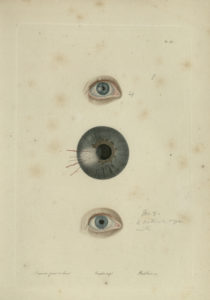Since starting as Digital Projects Librarian here at the Historical Medical Library of the College of Physicians of Philadelphia, one of my jobs has been to create new interpretive online exhibitions featuring unique aspects of our collections. Digital exhibitions are a great way to bring life to collections and to promote your institution. However, many exhibitions based on just text and images fail to be engaging in our age of constant clicking and easy distraction.
A plethora of articles exist showing that people do not engage with text online the same way they might if they were reading a book or a print article. Simply type “how people read online” into your favorite search engine and you’ll see headlines like, “How People Read Online: Why You Won’t Finish This Article” from Salon, or “Myth #1: People Read Online,” from the user design blog UXMyths. Indeed, a study by Jakob Nielsen, a prominent web usability expert, which tracked readers eyes as they read online, showed that only about 20% of the words of an average online text were actually being read. Studies like this show that online readers scan and click.
If you or your institution are going to be putting the time and effort into creating digital content around your collections, it is worth thinking about how to create digital exhibitions catered to people’s online behavior. Luckily, people in the digital humanities world have been thinking about this problem and have created tools for content creators to more easily build interactive and engaging exhibitions. I will be highlighting two such tools that I used in the creation of our last two major digital exhibitions.



